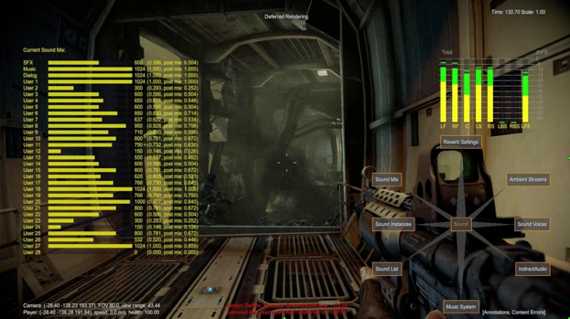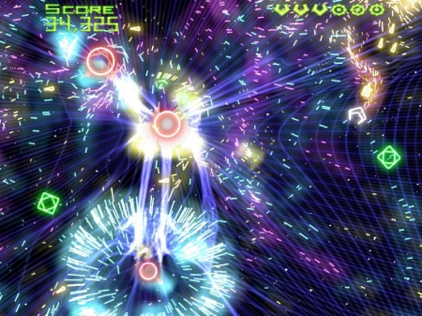At the Game Developers Conference Audio Boot Camp in 2006 Scott Selfon, Senior Audio Specialist at Microsoft, peeled back the layers of the onion for game audio newbies and exposed those in attendance to a Project Gotham Racing 3 debug build which allowed audio designers to visualize the parameters of sound propagation emanating from various points on the vehicle. If you can imagine florescent green wire-framed cones jutting out of various orifices such as: mufflers, windows, and engine compartments all representing various sounds being played – all of this while playing the game – and I tell you it was like a cross between every favorite game and the transition sequence from Tron. For the uninitiated this was nothing less than a revelatory epiphany; that behind the curtain of retail games lurks the debug underbelly that every developer come to rely on in order to polish and dissect various systems. Needless to say, that moment left quite an impression on my impressionable mind.
As here I sit four years later having been lucky enough to participate in the undercover debug of several titles, mouth still agape at the possibility to visualize sound and sound properties as a way to understand what is “going on” sound-wise at a given moment, I continue to be fascinated by these environments created by hand for the sake of debug. While this aspect of game audio may continue to be a closely held secret of developers leveraging internal pipelines and processes, a few screens have escaped which show off various functionality.
There may be more out there in the wild, but in my cursory scrubbing of conference presentations and recalled articles of the past – alas – this is all I’ve been able to turn up. (feel free to add links to other in game audio debug screen grabs in the comments section.)
In addition to presenting – what was then – state of the art examples of sound design and under the hood implementation considerations such as: speed of sound, distance propagation of sound, and reverb interpolation; he also went on to highlight an example of creative realtime DSP in Bizarre creations XBLA title Geometry Wars.
In a brilliant execution of a simple idea, Geometry Wars took a Low Pass Filter and applied it to the entire mix when dropping a bomb, submerging the high frequencies of both sound & music, and then releases the applied filter over the course of the next few seconds.
Listen for it at 2:27 in the following video:
Elegant in it’s simplicity and beautiful in it’s effectiveness, this creative use of DSP illustrated one of the strengths of the current generation to be able to effect sound dynamically, reactivity, and interactively as a way to further meld sound to gameplay. At the end of the day, finding ways to nurture and support the complex relationship of interactive audio in games is something we should all be reaching for.



Another great article on implementation, thanks Damian. The Low Pass Filter on the bomb is a simple idea, but very well done. How quickly the LPF opens and closes could make or break even something the effect.